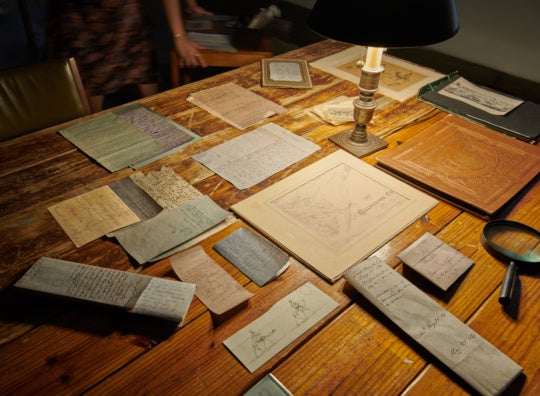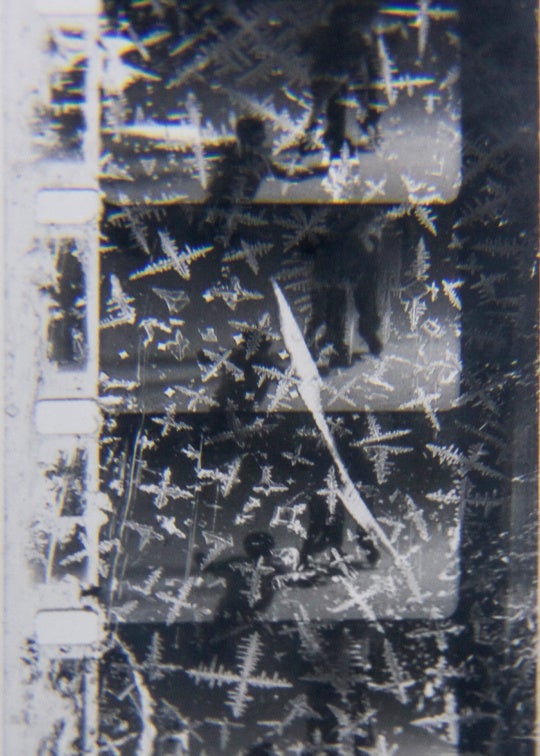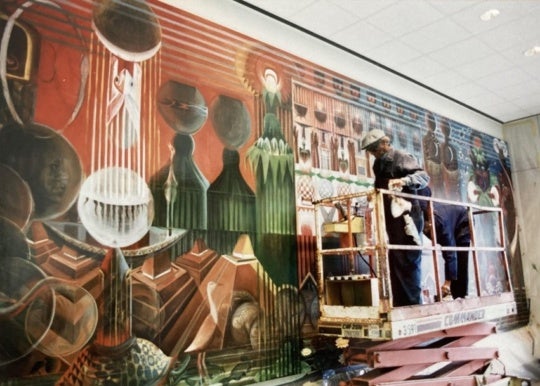
An essential interdependency is evident in Ridley Howard’s exhibition Conversations with Albers on view through February 8 at the Trois Gallery of SCAD’s campus in Atlanta.
A slight shift is developing in Howard’s recent work. Well known for large stylized figurative paintings with elements of abstraction, his studio practice has evolved to include directed abstraction in intimately scaled paintings. During this transition, Howard looked to Josef Albers to learn from his modernist visual lexicon. Although Albers can’t be solely responsible for this shift, the exhibition highlights the influence the modernist master currently holds over Howard’s practice.
My impressions while viewing this show are reminiscent of something Albers once wrote:
Seeing several of these paintings next to each other
makes it obvious that each painting
is an instrumentation in its own.
This means that they are all of different palettes,
and, therefore, so to speak, of different climates.[1]

An original portfolio edition from Albers’s 1963 masterwork titled Interaction with Color serves as reference manual for the exhibition. Secured inside a central vitrine, the volume is opened, and a handful of the some eighty folders have been arranged to reveal the formal compositions and playful color experiments Albers and his colleagues were conducting during the mid-twentieth century.
The exhibition is tucked away in the Trois Gallery within SCAD’s student library floor. While the space is small and intimate, and in this way serves this smaller scale of Howard’s work well, it also becomes rather inaccessible for a general audience. Within the context of the SCAD library, the referencing that occurs between Albers’s folio and Howard’s paintings feels tantamount to a mini art historical lesson. The student body at SCAD stands to benefit most from this exhibition and hopefully will take full advantage of available research resources.
The curated selection of newish work (created 2008-2012) is a balancing act between formal color studies, delicate portraiture, and quiet landscapes. The installation encourages this elemental balancing not only between subject matter, but also physical scale. The artworks therefore work best in collaboration and opposition with one another: rather than reinforcing a sameness, the close proximity and installation defend each work’s uniqueness. It’s a tension within the parts-to-whole mentality, because the parts are autonomously defensive.

Howard’s simple and distancing backgrounds (in his figurative works) became the subjects for these modernist-leaning abstractions. It’s almost as if the backgrounds jumped out of the portraits and came into focus on their own canvases. But it isn’t a focusing through grandeur or increased scale; there is instead a stripping down and zooming into the miniature á la Eames’ Powers of Ten. For example, the largest work in the show—March (2008), an oversize male portrait with a simple gray sky and hints of architectural forms—is paired with the smallest—Brown with Purple Shape (2011), an intimate abstraction at a mere five by six inches with a similar neutral-and-plum color palette.

The exhibition contains two dissonant but powerful moments when an abstraction hangs next to a landscape, and this close proximity begs a questioning, or at least a purposeful slowing, in the viewing flow. Similarly, Howard explores human subjects and cityscapes as forms for geometric color studies—and this instability speaks well on the “discrepancy between physical fact and psychic effect” that Albers so passionately believed.
Notes:
[1] Josef Albers, “On My Homage to the Square,” in Josef Albers: Homage to the Square (New York: Museum of Modern Art, 1964), n.p.
Ridley Howard’s exhibition Conversations with Albers is on view through February 8 at the Trois Gallery of SCAD-Atlanta located at 1600 Peachtree Street.




